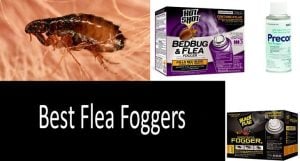How can you stop carpenter bees? There are different ways to cause their struggling – fluid poisons, sprays, and baits. But, the matter is that wood bees prefer to live alone – so mass poisoning will not be very effective.
That’s why the best way to eliminate carpenter bees is to use traps. Wood bee traps may vary – homemade and professional, ordinary and original. By reading this text, you will know how to make a trap yourself and choose the most effective ready-to-use one on the market.
The University of Florida IFAS Extension experts approve of this control method although they claim it’s best to use several traps simultaneously.
However, the University of Kentucky specialists warn that the traps are probably most effective early in the season when the bees are establishing their sites and where bee numbers are relatively low.
If you don’t manage to hang the traps in time, you’ll have to treat carpenter bees and their nests with insecticides. That is why we’ll first tell you about the traps. But if you are reading this in summer or fall, scroll down straight to the TOP-6 Best Carpenter Bee Killers section.
Table of Contents:
Top 10 Facts You Must Know Before Taking on Carpenter Bees
Carpenter bees (wood bees) are not the best neighbors of humankind. In late spring, they appear at our houses, frighten our children by their aggressive behavior, and – what is more important – destroy our premises. Besides, wood bees have a sort of “generation memory,” and they return to the wood chosen by their parents over and over again.
1. Carpenter bees have over 500 species and are the most common kind of bees.
2. These insects generally drill holes in dead wooden logs, wooden structures, and even bamboo.
3. The bees do not eat wood. They only make holes to lay their eggs.
4. Carpenter bees drill into wood by making a perfect circular entrance visible on the surface of the wood. The hole may reach up to 16 mm in diameter.
5. A carpenter bee is easy to be confused with a bumble bee. They are very much alike. But carpenter bees do not dig burrows in ground. Besides, their bodies are bigger and not covered by fluff.
6. Bee “husbands” do not have a stinger, and can’t bite. But they frighten people most often – they whirl round them and attack. Female bees stay in the wood most of the time. The problem is that they “chew” passages and lay larvae. How to Identify male carpenter bee: Millie Davenport from Clemson Cooperative Extension explains that male carpenter bees have white heads unlike female ones. So if you see this white spot you’ll know that this insect can’t bite you.
7. Wood bees are not social insects. They live by their own and might be eliminated one by one.
8. Invasion of these insects usually occurs at the end of spring: They lay larvae in May or June. In August, their babies make an appearance.
9. Their tunnels “look at” the sun. These insects rarely dwell at shadowy side of the house.
10. Bees prefer unstained conifers, such as red trees, cedars, cypresses, firs, pines. Scientists from the University of California IPM Agriculture & Natural Resources claim that carpenter bees avoid most hardwoods.
Homemade Carpenter Bee Trap
Well? Have you decided to exterminate these pests? To start, let’s try to make it with our own hands.
Wood Bee Trap Plans
Building a trap for these insects doesn’t involve any rocket science. It does not involve any electrical engineering or complex mechanical work.
The basic principle of a carpenter bee bait is based on the fact that these big black bees tend to drill into an already existing hole in wooden structures. The ready trap has holes on each side, and this sight lures carpenter bees.
Once the insects have entered this box through one of these tempting holes, they will move towards the light spot at the other end (another instinct of the insects of this sort). And following the light, the insects would end up inside the carpenter bee catcher. The following is a manual on how this trap can be made.
Building Wood Bee Trap: Instruments
To get rid of wood bees, we need the following instruments to make up different traps:
- A soda/water bottle
- A plastic bottle or jar with a screw-on lid
- Some wood remnants
- Screws
- A saw (preferably a circular saw, such as Skil )
- An electric drill for making holes
- Nails and a hammer (medium sized)
5 Simple Steps of Bee Trap Making
Once you’ve got the tools, try the next simple steps to make up the trap for carpenter bees:
- Using a saw, cut 4 wood pieces of equal size (about 10 inches long).
- With the help of a hammer and nails, fix these wooden pieces in the form of a rectangle.
- Place a piece of plywood on the rectangle shaped wooden structure you’ve just made, so it will hang over it.
- Drill holes of at least 16 mm diameter in the wooden structure (on all four sides, in the upward direction).
- Attach the bottle to the box by inserting the neck of the bottle in the box through one of four holes. Done!
The 3 Best Carpenter Bee Traps: Wooden and Sticky Traps
Not everyone has “golden hands,” or enough time to make a carpenter bee trap. There are two types of ready-to-use traps that are really effective: the first is wooden traps with a glass or a plastic bee collector and the second – sticky traps without any collectors for dead insects. We have collected 3 typical products of both types.
Carpenter Bee Trap
The bee collector from Carpenter is made up of glass and the fitting represents a metallic chain, thus increasing the mounting reliability. The manufacturers offer several “upgrades” of the product, with which it can be turned into a trap for wasps and “yellowjackets” as well. The point here is a bait recipe which includes 1 inch of soda and 5 drops of soap… But this bait is not necessary for carpenter bees.
{code 693}
Price: Check the current price
Bees N Things Plastic Bottle Carpenter Bee Trap
А carpenter bee trap with a plastic bottle is not a good choice. Customers were likely to expect much more efficiency from the catcher. Thus, some wrote that their bees had succeeded to find a way out of the trap. And this is a bad indicator!
According to the customer’ reviews, wooden traps with a vertical position of a bee collector have higher ratings. So we recommend to buy traps like CBS Carpenter Bee Trap.
{code 693}
Price: Check the current price
Rescue Non Toxic TrapStik

It attracts wasps as well as carpenter bees with its unnaturally bright color. Insects take it for a large and appetizing flower, fly into, sit on special glue… and stay there forever. Besides, the sticky base doesn’t dry out whether it is cold or hot. The product is water resistant and can hold more winged victims than small bee collectors.
Sometimes one can read enthusiastic comments like “100 wasps in one day” and so on. The device is also rather good against the heroes of our review. Buyers note that they have succeeded to reduce the population of “carpenters” by several times with the help of Rescue Trap Stick. The only criticism we’d point out is that the device is not environment friendly, due to its indiscriminate catchings.
“Included among the fallen were honey bees and beneficial parasitic wasps. If you want to get rid of dangerous or harmful (to humans, pets or property) wasps and bees, purchase a species-specific, enclosure-style trap that will not capture unintended species. As another reviewer stated, too, the danger to insect-eating birds is real. Don’t take the chance”. But we believe that the trap has deserved its rating and is quite good, especially for its price.
{code 692}
Price: Check the current price
Essential Reading: How to Get Rid of Wasps
We’ve told you about three carpenter bee traps. These traps are enough good (each trap is effective in its own way), but they are typical – you may use these or choose something else from the category of carpenter bee traps.
Carpenter Bee Traps Comparison Chart
-
Product
Brief description
Carpenter Bee Trap
The bee collector from is made up of glass and the fitting represents a metallic chain, thus increasing the mounting reliability.
Bees N Things Trap The developers seem to have planned to surprise their users by the compact size and side position of a bee collector. Rescue Non Toxic TrapStik It attracts wasps, flies and bees with its unnaturally bright color. Insects take it for a large and appetizing flower, fly into, sit on special glue… and stay there forever.
Top-6 Insecticides to Get Rid of the Carpenter Bees in Their Nests
The University of California IPM entomologists recommend getting rid of them with the help of dust poured down the nests or tunnels. Apply dust formulations of insecticides or desiccant dusts into nest holes with a bulb applicator. Dusts containing pyrethrin (Drione Dust), borate or disodium octaborate tetrahydrate (Tim-bor), and pyrethroids including deltamethrin (Bonide Termite and Carpenter Ant Dust) and cyfluthrin (Tempo Dust) are currently labeled for use against carpenter bees.
Dusts
Manufacturers don’t produce special dusts for carpenter bees, but you can use termite or carpenter ants treatment. You can pick any producer you like, such as TERRO or Bonide, as their products contain deltamethrin.
 Both Bonide and TERRO are board action insecticides that kill on contact. All you need to do is pour any of these waterproof dusts into the tunnel and wait for it to act. Deltamethrin has repelling residual effect but Bonide’s dust’s lasts longer (for up to 18 months) because of the insecticides higher concentration of 0.5%. 0.05% of the active ingredient in Terro’s treatment will only provide 8 months of repelling.
Both Bonide and TERRO are board action insecticides that kill on contact. All you need to do is pour any of these waterproof dusts into the tunnel and wait for it to act. Deltamethrin has repelling residual effect but Bonide’s dust’s lasts longer (for up to 18 months) because of the insecticides higher concentration of 0.5%. 0.05% of the active ingredient in Terro’s treatment will only provide 8 months of repelling.
Price: Bonide Dust, 10-Ounce: Check the current price
{code 691}
Price: TERRO Dust, 16- Ounce: Check the current price
Try to spray the dust as deep down the tunnel as possible. A Powder Duster will help you.
{code 690}
Professional insecticides
If the infestation area is great, use professional insecticides in huge packs. Here are two such products: Tim-bor Professional Insecticide and Fungicide. The former 98% Disodium Octaborate Tetrahydrate insecticide is to be dissolved in water and the solution should be used for treating the wooden surfaces loved by carpenter bees, such as fences, decks, steps sheds and other out buildings.
Drion Dust, contains 1.00% of pyrethrin and is ready-to-use. Pour it down the bee tunnel immediately and anywhere these pests are found. Drion Dust promises to retain its killing effect for 6 months after treatment.
{code 688}
Price of Tim-bor insecticide (1.5 lb bag): Check the current price
{code 689}
Price of Drion Dust (1 lb): Check the current price
Carpenter Bee Killer Foam
If you don’t like dealing with dusts, try foaming the nest with Bayer Advanced Termite and Carpenter Bee Killer Foam. This foam is aimed at eliminating carpenter bees, termites and other insects. The product’s active ingredient is 0.05% imidacloprid that impacts the insects’ CNS leading to paralysis and death. Bayer Foam will be appropriate not only for getting rid of carpenter bees in the tunnels, but also in other inaccessible spots as it can increase 30 times when sprayed and penetrate any cracks.
{code 687}
Price: Check the current price
The Ohio State University experts give a great tip: Wood that is painted or coated with an oil stain can help, but not always. I prefer using a pyrethroid like permethrin to spray on the wood. As with most insects, they really dislike this and move on.
As you remember, permethrin is a universal insecticide aimed at getting rid of many types of insects, including carpenter bees. That is why a canister will last a long time for getting rid of almost all pests (mosquitoes, termites, ants etc.).
You can buy any brand of the substance, such as this 36.8% pure permethrin – Permethrin SFR 36.8% permethrin Quart 6666105 for Check current price.
All you need to do is to dissolve it in the water according to the manual and treat the places that are infested: façades, basements, around home areas, sheds, and barns, lawns, landscapes, ornamentals. This concentrate can be also used inside and around wooden birdhouses if the carpenter bees have happened to settle there. If needed, pour the solution down the bees’ nest (tunnel).
{code 686}
Price: Check the current price
Best Carpenter Bee Killers Comparison Chart
| Product | Active Ingredient | Effectiveness/Action |
| Bonide 365 | 0,5% deltamethrin. | Pour the dust into the nest and tunnels. Effect lasts for up to 18 months. |
| TERRO 600 | 0,05% deltamethrin. | Pour the dust into the nest and tunnels. Effect lasts for up to 8 months |
| Harris Duster | – | A plastic duster. |
| Bellows Hand Duster | – | A metal duster. |
| Tim-bor | 98% Disodium Octaborate Tetrahydrate. | Dissolve in water and treat the infested area or pour down the tunnel. |
| Drion Dust
|
1% Pyrethrins. | Pour the dust into the nest and tunnels. Killing effect lasts for up to 6 months. |
| Bayer Advanced | 0.05% imidacloprid. | When used the foam takes up 30x more space. |
| Permethrin | 36.8% permethrin. | Is suitable for treating infested wooden buildings. |
{code 5}
Why are carpenter bees dangerous?
1. They can still bite. Female bees can sting a person, but scientists from Alabama A&M University and Auburn Universities saying that they are “Not a stinging hazard unless handled”. So don’t try to catch or kill these insects using hands.
2. They destroy buildings. Tunnels made by these insects cause a lot of damage to wood. Entomologists from The Kansas State University explain that “excavation proceeds slowly, at the rate of about one inch per week in old, softwoods”, but for some years of active work, these black and yellow fellows can turn even thick planks into dust.
About other wood destroyers: How to get rid of termites
3. They attract woodpeckers. The larvae of bees are the favorite dish of woodpeckers. They are able to feel this delicious food at a moment and begin to get bees’ babies out of the wood. This harms the wood more, though.
4. They multiply greatly. A mature bee can give birth to 6-8 babies in one summer. A male bee can impregnate several female bees several times… So, judge for yourself: One safe and sound bee is able to multiply its kin in just a single warm season.
{code 416}
















